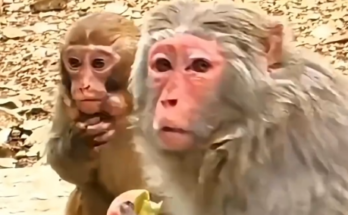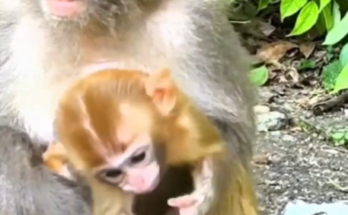It was a bright spring morning, the kind where the sun feels warm but the breeze still carries a touch of winter. The air smelled like fresh grass and damp earth. I had just finished my breakfast when I heard a strange honking sound outside the window. At first, I thought it was the neighbor’s dog barking at something, but when I stepped outside, the sound became clearer—and much more urgent. It was the distressed call of a goose.
I followed the sound across the yard, past the old oak tree, and into the patch of woods behind our house. The honking grew louder with each step. When I reached a small clearing near the creek, I saw her—a large gray goose with her wing caught between the roots of a fallen tree. Her feathers were ruffled, and she flapped helplessly, honking in panic. My heart sank. She must have landed awkwardly or tried to hide from a predator, only to get stuck.

Cautiously, I approached. The goose hissed and tried to bite, frightened and in pain. I spoke softly, trying to calm her. “It’s okay, girl. I’m here to help you.” I moved slowly, inching closer until I could assess the situation. Her wing was wedged tightly, but thankfully, it didn’t look broken—just badly pinched. With one hand I gently held her body still, and with the other, I lifted the root just enough to slide her wing out.
She squawked and wriggled, but once free, she limped back and flopped down beside the creek, exhausted. I noticed she wasn’t flying off. Something was wrong.
I decided to call the local wildlife rescue center. They advised me to bring the goose in for examination. I wrapped her gently in an old towel and placed her in a large box in the back of my car. She was surprisingly quiet during the ride, as if she knew I was trying to help.
At the rescue center, a kind woman named Marla took the goose and checked her thoroughly. “She’s bruised, but not broken,” Marla explained. “With a few days of rest and care, she’ll be back to normal. You did the right thing bringing her in.”
Relieved, I asked if I could visit her while she recovered. Marla smiled. “Of course. We could always use more animal lovers around here.”
Over the next week, I visited the goose—whom I had now named Greta—every day. I brought her lettuce, peas, and even a few grapes, which quickly became her favorite treat. Greta would waddle to the edge of her enclosure every time she saw me, honking in a way that sounded almost cheerful.
As the days passed, Marla and I became friends. She told me stories of the many animals they had rescued—hawks tangled in fishing lines, baby raccoons orphaned too soon, deer injured by cars. I had never realized how many creatures needed help. The rescue center was small and underfunded, but full of heart.
One afternoon, Marla asked, “Have you ever thought about volunteering here?”
I hadn’t. My days were usually filled with routine chores, and I worked part-time at a local bookstore. But something had changed in me since finding Greta. I had felt a sense of purpose that I hadn’t felt in years.
“I’d love to,” I replied without hesitation.
So I began helping out. At first, it was simple tasks—cleaning cages, preparing food, gently handling animals that needed care. Then I started learning more—how to assess injuries, how to administer medicine, how to calm frightened creatures with nothing but a steady hand and a kind voice.
Greta recovered fully within two weeks. The day we released her back into the wild was emotional. Marla and I carried her to the edge of a large pond just outside town. Greta waddled a few steps, turned back to look at us, then opened her wings and soared into the sky with a loud, triumphant honk. I felt tears prick my eyes. She was free again. And somehow, so was I.
But the story didn’t end there.
A month later, I received a call from Marla. “There’s a situation,” she said. “A group of geese are nesting near the highway construction site. We need to move them, or they won’t survive.”
I joined the team the next morning. It was a delicate operation—geese are fiercely protective of their nests, and the noise from the construction equipment made them skittish. We used barriers and noise-reducing tarps. We moved slowly and respectfully. By sunset, we had safely relocated three nests to a nearby protected area.
As we watched the geese settle into their new home, I couldn’t help but feel proud. That one act of helping Greta had opened a door I never knew existed. I had become part of something bigger than myself—something that mattered.
Weeks turned into months. I kept volunteering. I took a course on wildlife rehabilitation. I even began fundraising to support the center, organizing community events and talking to local schools about caring for nature. People began to recognize me as “the goose girl,” a nickname I wore with pride.
One evening, just as spring was turning into summer, I was walking by the pond where we had released Greta. I heard a familiar honk and looked up. A group of geese flew overhead, and one of them broke formation for just a moment, gliding lower, almost as if saying hello.
It could’ve been any goose, I knew that. But my heart told me it was Greta.
And then…
Everything changed for me. My world, once quiet and predictable, was now alive with purpose. I had found a calling in helping the voiceless. I had made new friends, discovered a love for nature I never fully understood before, and most importantly, I had learned that even one small act of kindness—like rescuing a goose—could create ripples far beyond what you’d ever expect.
Greta’s rescue was just the beginning.



